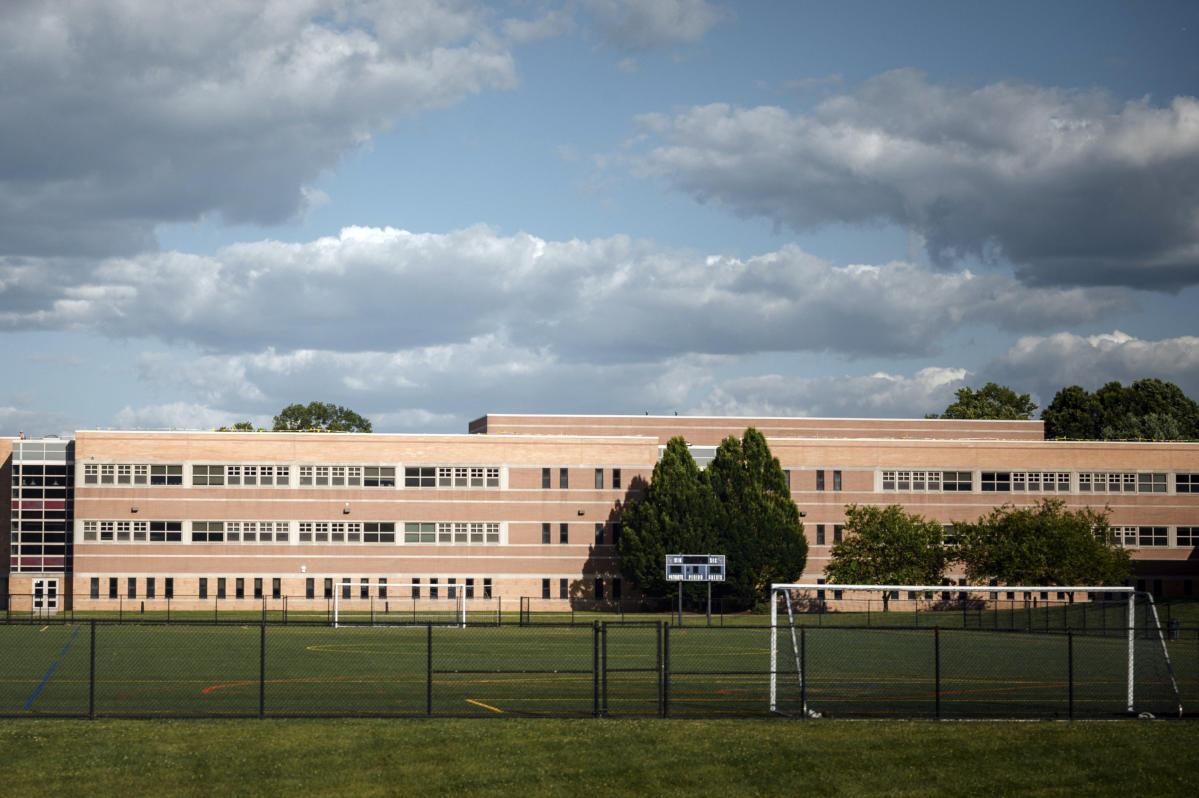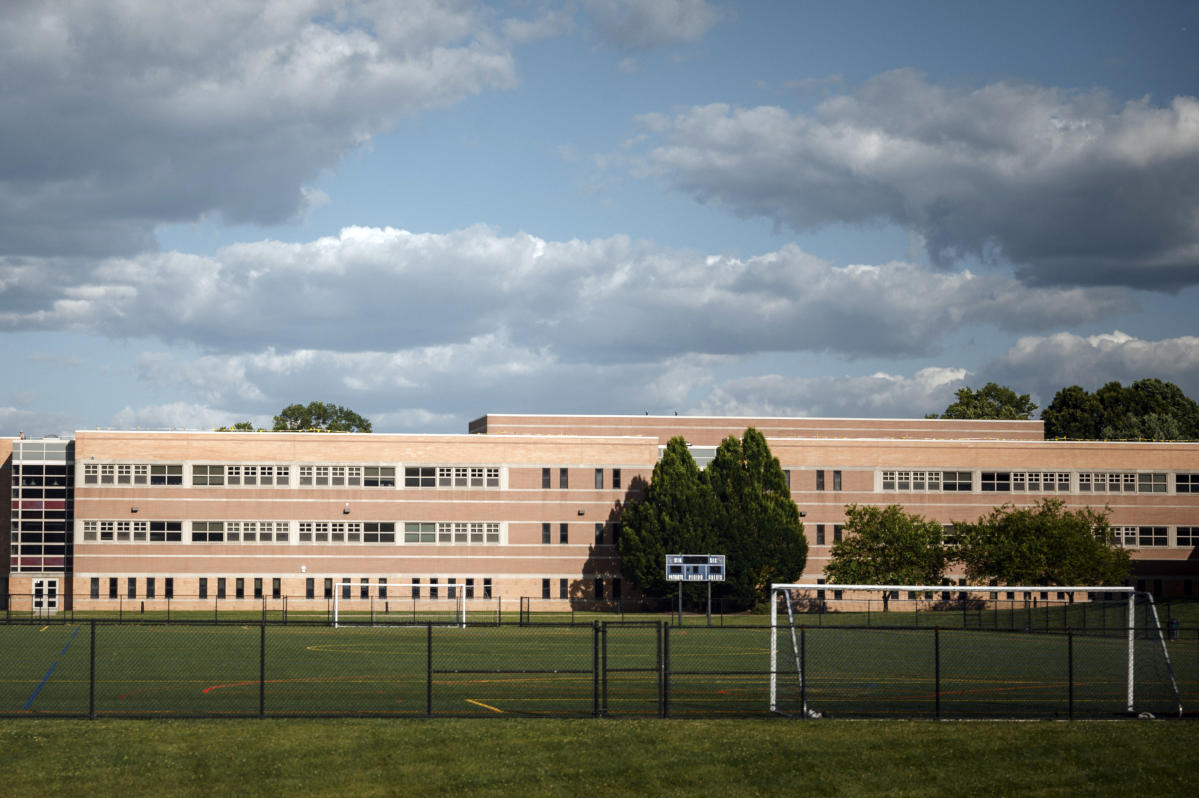
MALVERN, Pa. — In February, Patrice Motz, a veteran Spanish teacher at Great Valley Middle School in Malvern, Pennsylvania, was warned by another teacher that trouble was brewing.
Some eighth graders at her public school had set up TikTok accounts impersonating teachers. Motz, who had never used TikTok, created an account.
She found a fake profile for @patrice.motz, which had posted a real photo of her at the beach with her husband and their young children. “Do you like to touch kids?” a text in Spanish over the family vacation photo asked. “Answer: Sí.”
Sign up for The Morning newsletter from the New York Times
In the days that followed, some 20 educators — about one-quarter of the school’s faculty — discovered they were victims of fake teacher accounts rife with pedophilia innuendo, racist memes, homophobia and made-up sexual hookups among teachers. Hundreds of students soon viewed, followed or commented on the fraudulent accounts.
In the aftermath, the school district briefly suspended several students, teachers said. The principal during one lunch period chastised the eighth grade class for its behavior.
The biggest fallout has been for teachers like Motz, who said she felt “kicked in the stomach” that students would so casually savage teachers’ families. The online harassment has left some teachers worried that social media platforms are helping to stunt the growth of empathy in students. Some teachers are now hesitant to call out pupils who act up in class. Others said it had been challenging to keep teaching.
“It was so deflating,” said Motz, who has taught at the school, in a wealthy Philadelphia suburb, for 14 years. “I can’t believe I still get up and do this every day.”
The Great Valley incident is the first known group TikTok attack of its kind by middle schoolers on their teachers in the United States. It’s a significant escalation in how middle and high school students impersonate, troll and harass educators on social media. Before this year, students largely impersonated one teacher or principal at a time.
The middle schoolers’ attack also reflects broader concerns in schools about how students’ use, and abuse, of popular online tools is intruding on the classroom. Some states and districts have recently restricted or banned student cellphone use in schools, in part to limit peer harassment and cyberbullying on Instagram, Snap, TikTok and other apps.
Now social media has helped normalize anonymous aggressive posts and memes, leading some children to weaponize them against adults.
“We didn’t have to deal with teacher-targeting at this scale before,” said Becky Pringle, president of the National Education Association, the largest U.S. teachers union. “It’s not only demoralizing. It could push educators to question, ‘Why would I continue in this profession if students are doing this?’”
In a statement, the Great Valley School District said it had taken steps to address “22 fictitious TikTok accounts” impersonating teachers at the middle school. It described the incident as “a gross misuse of social media that profoundly impacted our staff.”
Last month, two female students at the school publicly posted an “apology” video on a TikTok account using the name of a seventh grade teacher as a handle. The pair, who did not disclose their names, described the impostor videos as a joke and said teachers had blown the situation out of proportion.
“We never meant for it to get this far, obviously,” one of the students said in the video. “I never wanted to get suspended.”
“Move on. Learn to joke,” the other student said about a teacher. “I am 13 years old,” she added, using an expletive for emphasis, “and you’re like 40 going on 50.”
In an email to The New York Times, one of the students said that the fake teacher accounts were intended as obvious jokes, but that some students had taken the impersonations too far.
A TikTok spokesperson said the platform’s guidelines prohibit misleading behavior, including accounts that pose as real people without disclosing that they are parodies or fan accounts. TikTok said a U.S.-based security team validated ID information — such as driver’s licenses — in impersonation cases and then deleted the data.
Great Valley Middle School, known locally as a close-knit community, serves about 1,100 students in a modern brick complex surrounded by a sea of bright green sports fields.
The impostor TikToks disrupted the school’s equilibrium, according to interviews with seven Great Valley teachers, four of whom requested anonymity for privacy reasons. Some teachers already used Instagram or Facebook but not TikTok.
The morning after Motz, the Spanish teacher, discovered her impersonator, the disparaging TikToks were already an open secret among students.
“There was this undercurrent conversation throughout the hallway,” said Shawn Whitelock, a longtime social studies teacher. “I noticed a group of students holding a cellphone up in front of a teacher and saying, ‘TikTok.’”
Students took images from the school’s website, copied family photos that teachers had posted in their classrooms and found others online. They made memes by cropping, cutting and pasting photos, then superimposing text.
The low-tech “cheapfake” images differ from recent incidents in schools where students used artificial intelligence apps to generate real-looking, digitally altered images known as “deepfakes.”
While some of the Great Valley teacher impostor posts seemed jokey and benign — like “Memorize your states, students!” — other posts were sexualized. One fake teacher account posted a collaged photo with the heads of two male teachers pasted onto a man and woman partially naked in bed.
Fake teacher accounts also followed and hit on other fake teachers.
“It very much became a distraction,” Bettina Scibilia, an eighth grade English teacher who has worked at the school for 19 years, said of the TikToks.
Students also targeted Whitelock, who was the faculty adviser for the school’s student council for years.
A fake @shawn.whitelock account posted a photo of Whitelock standing in a church during his wedding, with his wife mostly cropped out. The caption named a member of the school’s student council, implying the teacher had wed him instead. “I’m gonna touch you,” the impostor later commented.
“I spent 27 years building a reputation as a teacher who is dedicated to the profession of teaching,” Whitelock said in an interview. “An impersonator assassinated my character — and slandered me and my family in the process.”
Scibilia said a student had already posted a graphic death threat against her on TikTok earlier in the school year, which she reported to police. The teacher impersonations increased her concern.
“Many of my students spend hours and hours and hours on TikTok, and I think it’s just desensitized them to the fact that we’re real people,” she said. “They didn’t feel what a violation this was to create these accounts and impersonate us and mock our children and mock what we love.”
A few days after learning of the videos, Edward Souders, the principal of Great Valley Middle School, emailed the parents of eighth graders, describing the impostor accounts as portraying “our teachers in a disrespectful manner.”
The school also held an eighth grade assembly on responsible technology use.
But the school district said it had limited options to respond. Courts generally protect students’ rights to off-campus free speech, including parodying or disparaging educators online — unless the students’ posts threaten others or disrupt school.
“While we wish we could do more to hold students accountable, we are legally limited in what action we can take when students communicate off campus during nonschool hours on personal devices,” Daniel Goffredo, the district’s superintendent, said in a statement.
The district said it couldn’t comment on any disciplinary actions, to protect student privacy.
In mid-March, Nikki Salvatico, president of the Great Valley Education Association, a teachers union, warned the school board that the TikToks were disrupting the school’s “safe educational environment.”
“We need the message that this type of behavior is unacceptable,” Salvatico said at a school board meeting March 18.
The next day, Souders sent another email to parents. Some posts contained “offensive content,” he wrote, adding: “I am optimistic that by addressing it together, we can prevent it from happening again.”
While a few accounts disappeared — including those using the names of Motz, Whitelock and Scibilia — others popped up. In May, a second TikTok account impersonating Scibilia posted several new videos mocking her.
She and other Great Valley educators said they had reported the impostor accounts to TikTok, but had not heard back. But several teachers, who felt the videos had violated their privacy, said they did not provide TikTok with a personal ID to verify their identities.
On Wednesday, TikTok removed the account impersonating Scibilia and three other fake Great Valley teacher accounts flagged by a reporter.
Scibilia and other teachers are still processing the incident. Some teachers have stopped posing for and posting photographs, lest students misuse the images. Experts said this type of abuse could harm teachers’ mental health and reputations.
“That would be traumatizing to anyone,” said Susan D. McMahon, a psychology professor at DePaul University in Chicago and chair of the American Psychological Association’s Task Force on Violence Against Educators. She added that verbal student aggression against teachers was increasing.
Now teachers like Scibilia and Motz are pushing schools to educate students on how to use tech responsibly — and bolster policies to better protect teachers.
In the Great Valley students’ “apology” on TikTok last month, the two girls said they planned to post new videos. This time, they said, they would make the posts private so teachers couldn’t find them.
“We’re back, and we’ll be posting again,” one said. “And we are going to private all the videos at the beginning of next school year,” she added, “’cause then they can’t do anything.”
On Friday, after a Times reporter asked the school district to notify parents about this article, the students deleted the “apology” video and removed the teacher’s handle from their account. They also added a disclaimer: “Guys, we’re not acting as our teachers anymore that’s in the past !!”
c.2024 The New York Times Company
EMEA Tribune is not involved in this news article, it is taken from our partners and or from the News Agencies. Copyright and Credit go to the News Agencies, email news@emeatribune.com Follow our WhatsApp verified Channel





